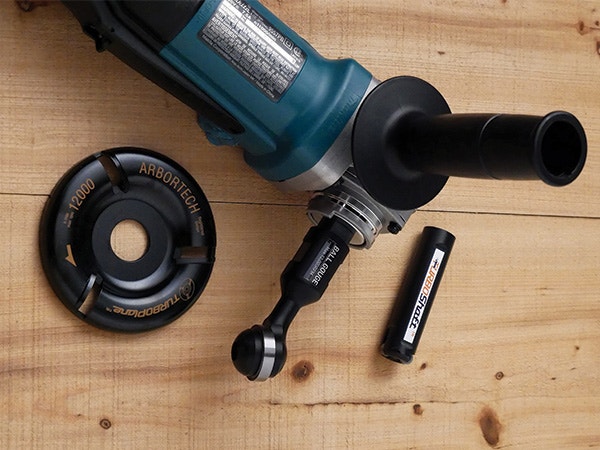Power Carving: Five Fast Facts
Shaping wood is at the heart of nearly any type of woodworking, but power carving takes that concept to a whole new level.
Carving is a niche of woodworking that has always interested woodworkers, but many of us are reluctant to try carving because we believe the skills are too specialized. Power carving is changing that paradigm.
1. Power carving is not about making Chippendale details. On the other hand, it is all about doing beautiful woodworking. There are many forms of power carving, from simply texturing a surface with a handheld sander to Dremel tools to flexible shaft-driven cutting systems to cutters mounted to an angle grinder. (Oh, and you can do power carving with an angle grinder and a grinding wheel. Confused? Just go with it.)
2. Green wood or kiln-dried? The answer is yes. Some tremendously interesting power carving does occur on logs or tree sections that are not typically dried. These can be realistic carvings of subjects like animals or even people, as well as abstract shapes. With that said, power carving techniques are being used by furniture makers more and more on kiln-dried stock.
3. Safety first. While not intrinsically more dangerous than any other type of woodworking, basic safety steps are a must when using a power carving tool. Protect all the standard vulnerabilities: hearing, eyesight and your lungs. A free spinning cutter on the end of a shaft or an angle grinder moves about in space more than a band saw blade or similar — so take common sense precautions. Also, dress appropriately (no flip-flops).
4. Start small. Depending on the tool and the cutter in play, you can remove an amazing amount of wood in very short order. It is an obvious truth that it is harder to add more wood back to your project than it is to carve it away. Like any woodworking skill, making mistakes is a clear path to learning what not to do — but you can minimize those mistakes by moderating your first attempts.
5. This pony does lots of tricks. Traditional woodworkers will quickly see handy aspects to power carving tools, but they can do much more than shape "butt cheeks" into a chair seat. Craftspersons all over the world are doing innovative and beautiful woodworking using power carving techniques. As examples abound, many of us will want to go hands-on and try it ourselves.
Keep the inspiration coming!
Subscribe to our newsletter for more woodworking tips and tricks




